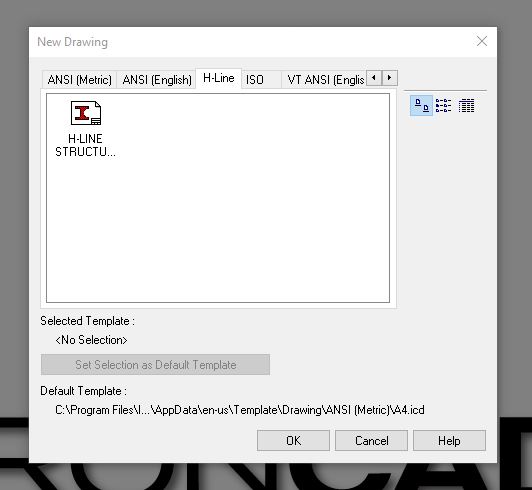
- #Edit ironcad 2009 drawing template software
- #Edit ironcad 2009 drawing template plus
inadvertent interactions from modifications.”. feature deleted by addition of larger feature. feature deleted by subtraction of larger feature,. non-generic feature(s) obtained from two or more generic ones,. interaction that makes a feature nonfunctional,. enumerated the following types of feature interactions: Typical checks that need to be done are: compatibility of parent/dependent features, limits on dimension, and inadvertent interference with other features. It is up to the person defining a feature to specify what is valid or invalid for a given feature. “There are no universally applicable methods for checking the validity of features. He identified that there were problems with features: Jami Shah wrote an Assessment of Features Technology, for Computer-Aided Design, a journal targeted to people doing research in the field of CAD. Weisberg barely scratches the surface of the issues that can create problems. In extreme cases (and sometimes in cases that were not particularly that extreme), the user was forced to totally recreate the model… Some people described designing with Pro/ENGINEER to be more similar to programming than to conventional engineering design.” If a parent level element is deleted or changed in certain ways it can have unexpected effects on child-level elements. This methodology has been described as a parent/child relationship, except that it can be many levels deep. “The problem with a pure parametric design technique that is based upon regenerating the model from its history tree is that, as geometry is added, it is dependent upon geometry created earlier. (A designer could not increase the dimension of L2 to point that 元 vanished.)ĭavid Weisberg, editor of the Engineering Automation Report (and from whose book, The Engineering Design Revolution, I have liberally cribbed for this article), pointed out the fundamental problem with parametrics: Pro/Engineer placed limits on the range of parameters. In 1990, Steve Wolfe, one of the CAD industry’s most insightful observers, pointed out that Pro/E was incapable of making some seemingly simple parametric changes. And even if that wasn’t achievable, it would be a great leap forward to just be able to rapidly create and explore design alternatives for parts and assemblies. Imagine being able to build a virtual CAD model of an engine, and, by changing a few parameters, being able to alter its displacement, or even its number of cylinders. To companies such as Deere and Caterpillar, it offered a compelling vision. The secret to Pro/E’s success was its parametric feature-based solid modeling approach to building 3D models. 
In 1992, on the strength of its product, PTC walked away with a 2,000 seat order from Caterpillar that Unigraphics had thought was in the bag. Within a few years PTC was winning major accounts from the old-line competitors.

To say Pro/E was a success would be a terrible understatement.
#Edit ironcad 2009 drawing template software
In addition, the traditional CAD/CAM software of the time unrealistically restricted low-cost changes to only the very front end of the design-engineering process.” And the cost of making design changes ought to be as close to zero as possible. “The goal is to create a system that would be flexible enough to encourage the engineer to easily consider a variety of designs.
#Edit ironcad 2009 drawing template plus
The benefit of this combination is a much friendlier user interface plus an intelligent geometric database.”Īccording to Sam Geisberg, the founder of PTC: The strength of the product is its mechanical features coupled with dimensional adjustability. “Pro/ENGINEER is the best example I have seen to date of how solid modelers ought to work. A couple of years later, Deere’s Jack Wiley was quoted in the Anderson Report, saying: The modern era of 3D CAD was born in September 1987, when Deere & Company bought the first two seats of Pro/Engineer, from the still new Parametric Technology Corporation.






 0 kommentar(er)
0 kommentar(er)
